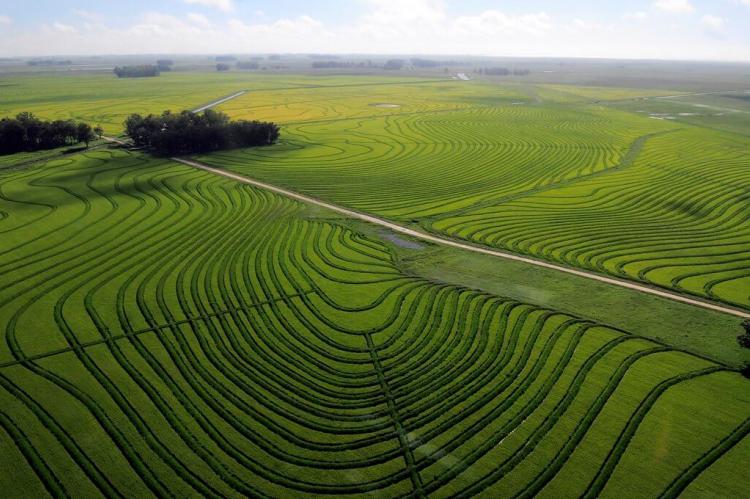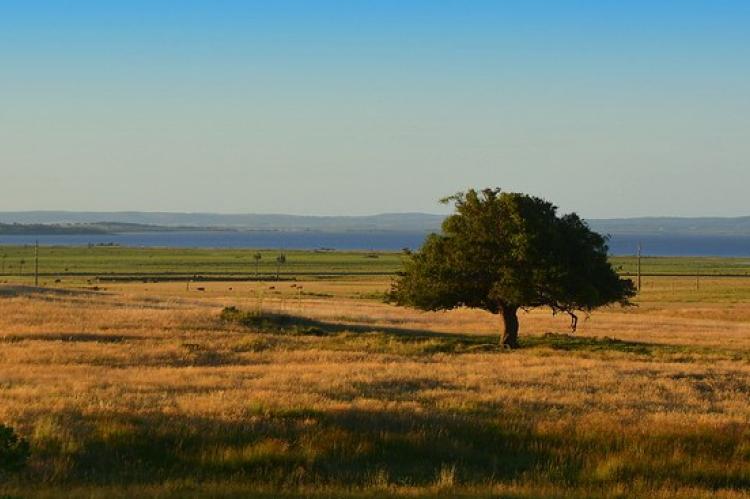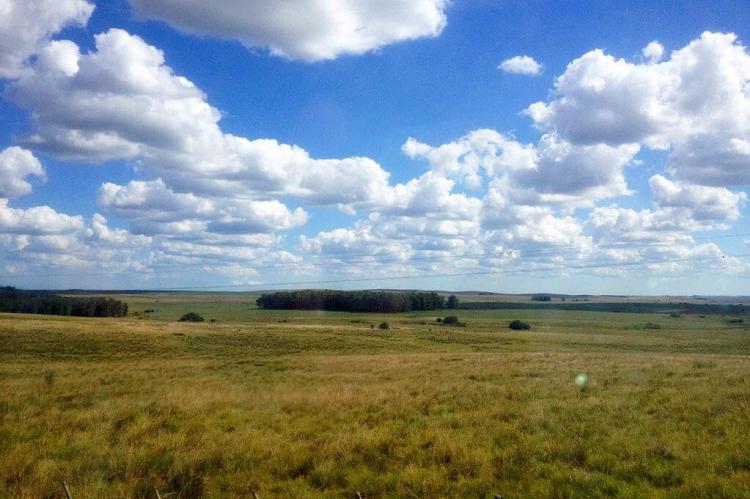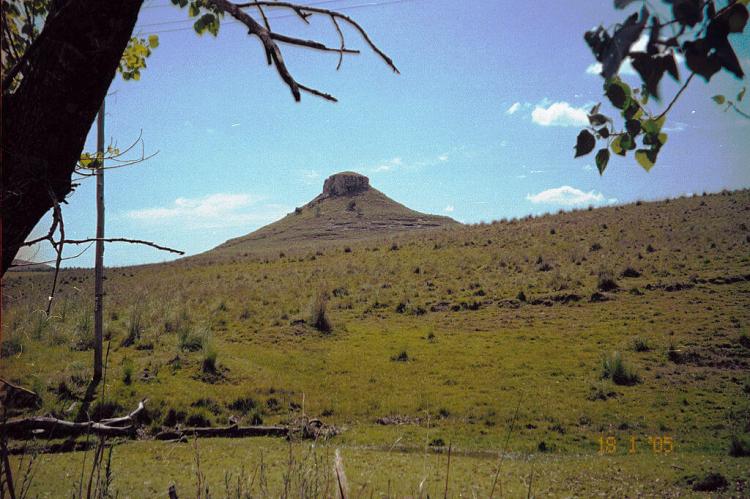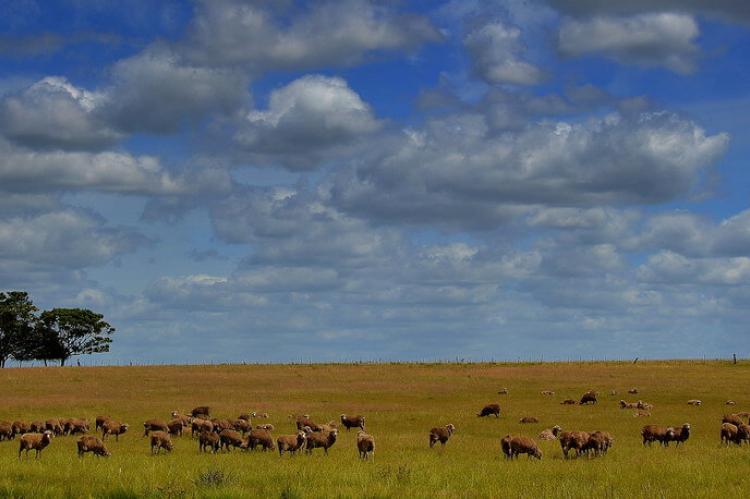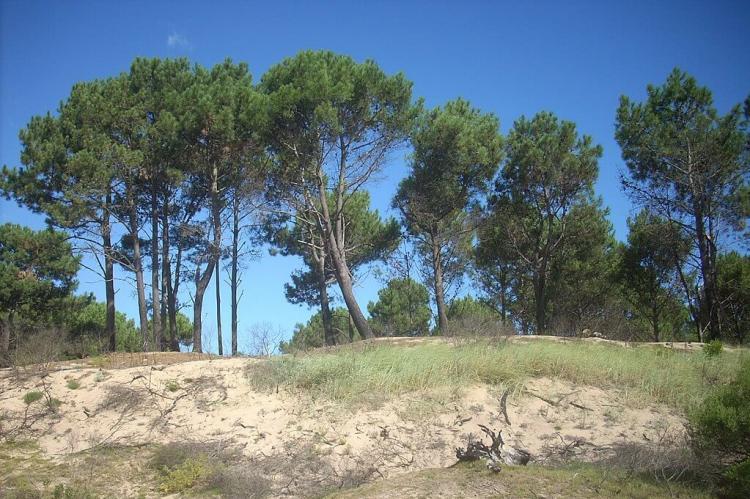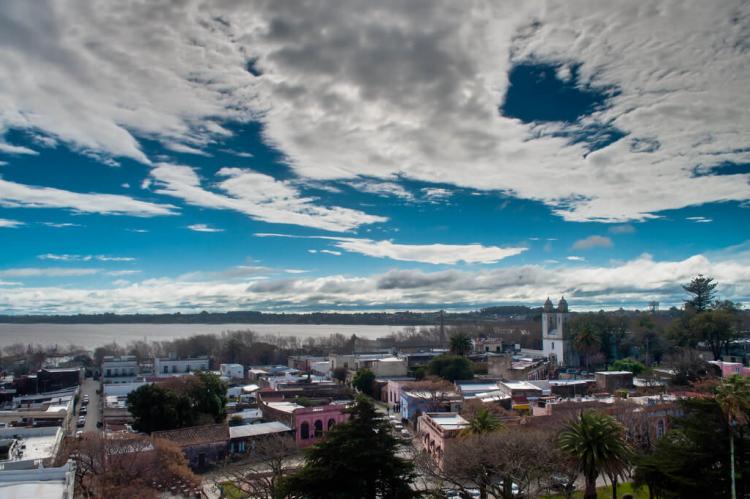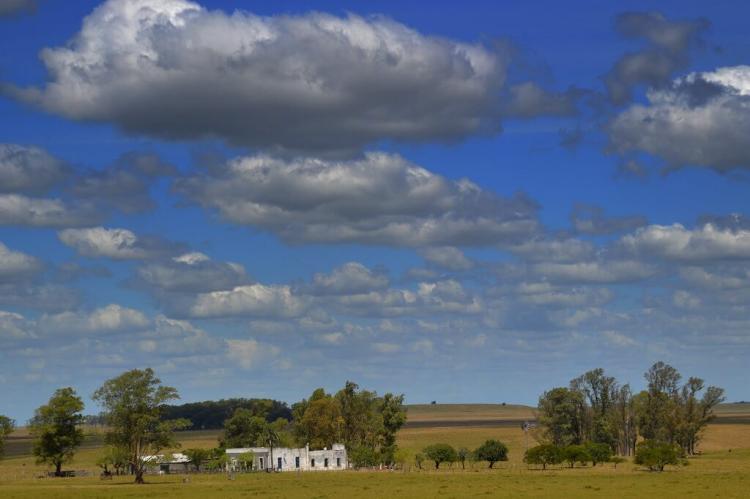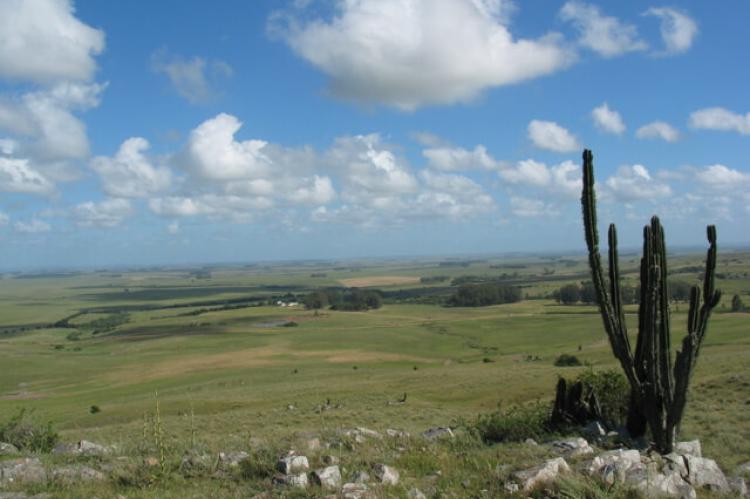Uruguay: Natural Landscape
Uruguay is located in the Southern Cone of South America on the southeastern Atlantic coast. Much of the country is a gently rolling plain that represents a transition from the almost featureless Argentine pampas in the west to the hilly uplands of southern Brazil in the east.
The Natural Landscape of Uruguay
Uruguay, located on the southeastern Atlantic coast of the Southern Cone in South America, occupies a distinctive position between Brazil to the north and east and Argentina to the west. The country, shaped like a wedge, boasts a land area of 176,215 square kilometers (68,037 square miles), making it the second-smallest nation in South America, following Suriname. It further ranks as the third-smallest in terms of territory, trailing behind French Guiana. A noteworthy element of Uruguay's geographic profile is the incorporation of approximately 2,600 square kilometers (1,004 square miles) of water, contributing to the nation's overall spatial makeup.
Uruguay's coastline extends 660 kilometers (410 miles) along the Atlantic Ocean, influencing its climate, economic activities, and cultural practices. The interplay between land and sea within this coastal stretch fosters a variety of ecosystems and habitats, reflecting the country's commitment to environmental sustainability.
The Uruguay River plays a crucial role in Uruguay's geography, serving as the entire western boundary with Argentina. This natural watercourse delineates a significant border and holds historical and strategic importance. To the north and east, the Jaguarão or Yaguarón River forms the border with Brazil, contributing to the country's hydrographical network and shaping its territorial extent.
Beyond the geopolitical implications, Uruguay's geography plays a foundational role in the nation's cultural, economic, and environmental dynamics. The natural boundaries, juxtaposition of land and water, and climatic variations contribute to the multifaceted nature of Uruguay's presence within the Southern Cone of South America.
Biodiversity
Uruguay, situated in the Southern Cone of the South American continent, presents a mosaic of ecosystems characterized by a moderate level of biodiversity compared to its larger neighbors. The nation's landscape is notably dominated by extensive grasslands, colloquially called the Pampas, which harbor diverse bird species, small mammals, and reptiles.
On the global stage, Uruguay holds the 83rd position in the Global Biodiversity Index, reflecting its ecological richness. The country boasts an estimated 409 bird species, 50 amphibian species, 725 fish species, 107 mammal species, 79 reptile species, and an impressive 2,911 vascular plant species. The varied ecosystems contribute to Uruguay's biological tapestry, creating habitats that support a wide range of flora and fauna.
Conservation
Recognizing the importance of preserving its biodiversity, Uruguay has proactively established a protected area network. This includes national parks, reserves, and protected landscapes strategically positioned nationwide. Notable examples include the Bioma Pampa-Quebradas del Norte Biosphere Reserve and Cabo Polonio National Park, each contributing to the conservation of unique ecosystems.
One significant Ramsar site in Uruguay is the Bañados del Este y Franja Costera Biosphere Reserve, emphasizing the nation's commitment to conserving wetland habitats. The designation as a Biosphere Reserve underscores the interconnectedness of conservation efforts with sustainable development practices.
Uruguay's relatively modest size facilitates the effective implementation of conservation measures. However, the nation faces challenges such as habitat loss and the proliferation of invasive species, which remain areas of concern. The delicate balance between preservation and development underscores ongoing efforts to ensure the longevity of Uruguay's rich biodiversity.
Climate
Uruguay, encompassing a humid subtropical climate according to the Köppen climate classification (Cfa), exhibits a relatively uniform climatic profile across the nation. The geographical location of Uruguay, entirely within the temperate zone, contributes to the consistent nature of its climate. Distinct seasonal variations characterize the prevalence of a humid subtropical climate and are notably influenced by the country's abundant water resources, high humidity levels, and frequent fog occurrences.
In the majority of Uruguay, the seasonal transitions follow a distinctive pattern. Spring tends to be damp, cool, and windy, offering a prelude to the warmer months. Summers bring warmth, mild temperatures characterize autumns, and winters usher in chilly conditions and uncomfortable dampness. While these seasonal variations are pronounced, occurrences of temperature extremes are infrequent.
The moderating influence of Uruguay's abundant water resources, high humidity levels, and the prevalence of fog acts as a mitigating factor against temperature extremes. This mitigating effect contributes to the overall temperate climate experienced throughout the country, making instances of excessively hot or cold weather uncommon.
One notable aspect of Uruguay's climate is the absence of significant geographic features such as mountains or other weather barriers. This lack of natural barriers makes all Uruguay locations susceptible to high winds and rapid weather changes. As atmospheric fronts or storms sweep the country, the absence of topographical impediments allows for swift and sometimes dramatic shifts in weather conditions.
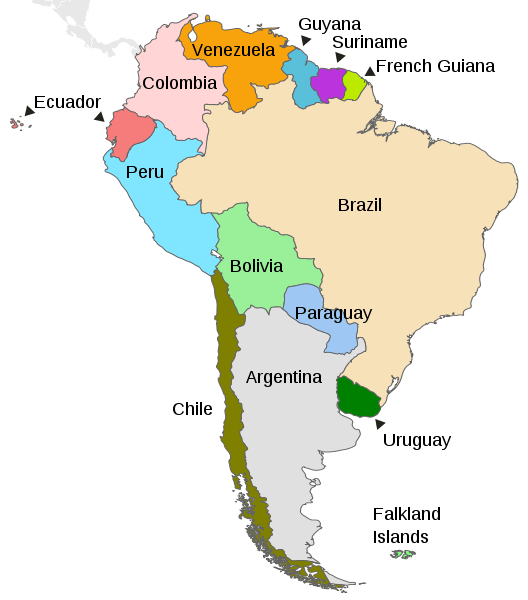
Map depicting the countries on the continent of South America
Natural Geography of Uruguay
Topography
The relief features of Uruguay are not well defined. Much of the countryside consists of a gently rolling plain that represents a transition from the almost featureless Argentine pampas in the west to the hilly uplands of southern Brazil in the east.
Flat plains flank the country on its southern, eastern, and western perimeters. The Atlantic coastal plain is sandy and marshy, often hosting lagoons and shallow tidal lakes. The shore areas (littorals) of the Río de la Plata and the Uruguay River are somewhat broader and merge gradually into the hilly interior. The remaining three-quarters of the country is a rolling plateau marked by ranges of low hills that become more prominent in the north as they merge into the highlands of southern Brazil. However, elevations in these hilly areas seldom exceed 200 m (650 ft) asl.
Uruguay has no mountain ranges. The Grande Range is a hill range that extends southward from the Brazilian border, almost to the Atlantic seaboard in the south. Here, it is bisected by the Sierra Carape hill range. Cerro Catedral, the highest point in the country at an elevation of 514 m (1,686 ft), is located here. The Cuchilla de Haedo (Haedo Range) is a low range of hills in the north-northwest of the country. The Bioma Pampa-Quebradas del Norte Biosphere Reserve is located on its east side. It comprises a mosaic of different ecosystems, including a primary forest with a subtropical jungle.
Streams and rivers sculpt the countryside, consisting of four river basins, or deltas: the Río de la Plata Basin, the Uruguay River, and the major internal river, the Río Negro. Several lagoons are found along the country's Atlantic coast. These lagoons, which are half-freshwater and half-saltwater, are often separated from the ocean by just a thin strip of sand and are home to much of the country's wildlife. In addition, the Bañados del Este y Franja Costera wetland and Biosphere Reserve are located in the east.
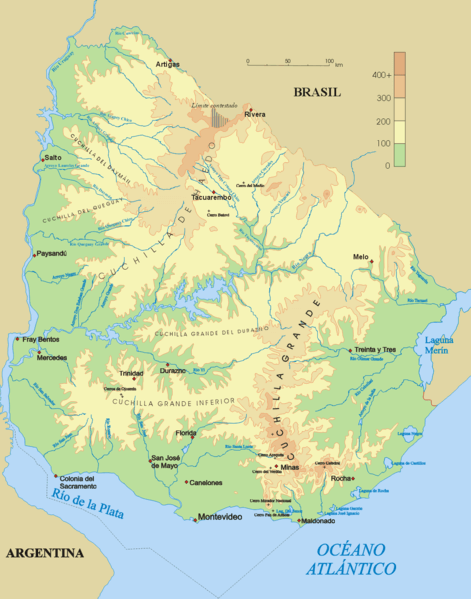
Topographical map of Uruguay
Geographic Regions
The country may be divided into four general regions based on social, economic, and geographical factors:
-
Atlantic Coast / Bañados del Este
-
Río de la Plata
-
Central Interior
-
Northern Interior
Atlantic Coast / Bañados del Este
The Atlantic Coast region stretches east of Montevideo and south of the country. A string of small seaside towns is located here, including the major resort of Punta del Este. The inland portion includes many small farms and truck gardens that grow vegetables and produce for the larger cities and resorts.
Located in southeast Uruguay, the Bañados del Este Biosphere Reserve harbors a remarkable complex of ecosystems, including white sand beaches, dunes, and lagoons along the Atlantic coast. This variety of habitats is home to a rich diversity of wildlife and remains almost intact on land and at sea.
Río de la Plata
The Greater Montevideo region holds over one-half of Uruguay's population. It is known for its well-preserved historical sites and colonial towns like Colonia del Sacramento. The agricultural and dairying area stretches west along the Río de la Plata from Montevideo. The littoral or coastal zone is to the north along the Uruguay River, a somewhat more developed region than the interior. Here, soils are alluvial and more fertile, favoring crop production and modest-sized farms.
Central Interior
The Central Interior region features rolling hills and pastures, which account for most of the productive land. Sheep rearing on medium-sized farms is concentrated in the west and south.
Northern Interior
The Northern Interior region is a land of ranches, cattle, and horses. Large cattle ranches (estancias) are concentrated in the north and east. Citrus growing is found in the west.
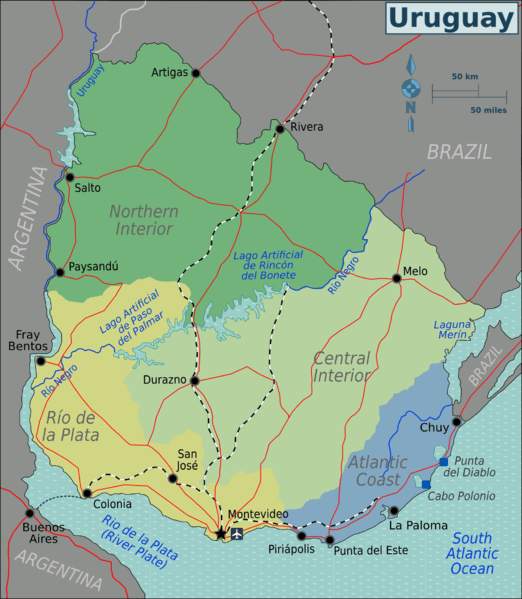
Map depicting the general regions of Uruguay
Islands and Archipelagos
Uruguay is a country with a relatively short coastline and no significant archipelagos. However, it does have a few islands and islets along its coast. Here are some of the notable islands in Uruguay:
-
Isla de Flores: Located in the Uruguay River, near Paysandú, this island is known for its historical significance and natural beauty.
-
Isla de Lobos: Situated in the Atlantic Ocean, this small island is known for its large colony of South American sea lions. It's a protected area and can be visited via authorized boat tours.
-
Isla de las Gaviotas: Found near Punta del Este, this island is known for its birdlife and is often visited for birdwatching.
-
Isla Gorriti: Located off the coast of Punta del Este, Isla Gorriti is a popular tourist destination. It features sandy beaches and recreational facilities.
-
Isla Timoteo Domínguez: Situated in the Uruguay River near Fray Bentos, this island is known for its history and is accessible by boat.
-
Isla Rasa: This small island is located near Carmelo and is known for its natural beauty.
-
Islote de Colastiné: A small islet in the Uruguay River near Paysandú.
-
Islas de Torres: A group of small islands in the Río Negro, near the city of Mercedes.
Bodies of Water
Uruguay has limited bodies of water due to its compact size and geographical features. While Uruguay's bodies of water may not be as extensive as some of its neighboring countries, they still play essential roles in its geography, economy, and cultural identity. The Río de la Plata and the Atlantic coastline provide critical connections to the sea, facilitating trade and tourism. At the same time, the Uruguay River and the freshwater lagoons contribute to regional biodiversity and water resources.
See more: Water Bodies of Uruguay
Natural Regions
Ecological Regions
The country's entire land area is part of the Uruguayan savanna, also known as the Brazilian-Uruguayan savanna, a subtropical grassland and savanna ecoregion. The Uruguayan savanna is critically endangered. There are only a few small isolated patches of intact habitat remaining. The whole ecoregion has been severely altered by cattle ranching, one of the main pillars of Uruguay's national economy.
Administrative Divisions
Uruguay is divided into 19 administrative departments, each with its capital city. Each department has a legislature and chief executive.
See more: Cultural Landscape of Uruguay
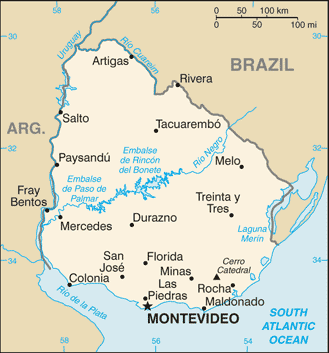
CIA map of Uruguay
